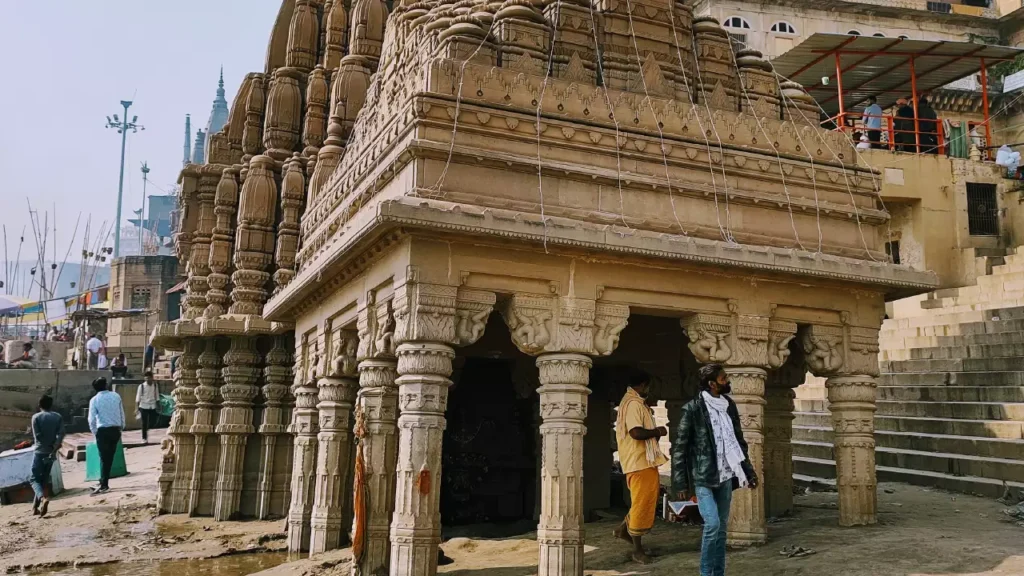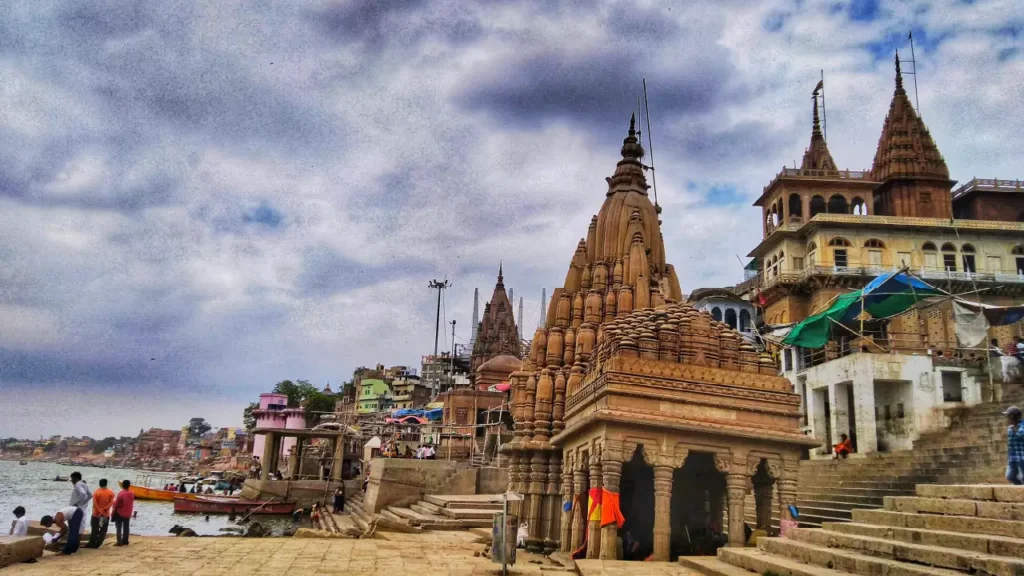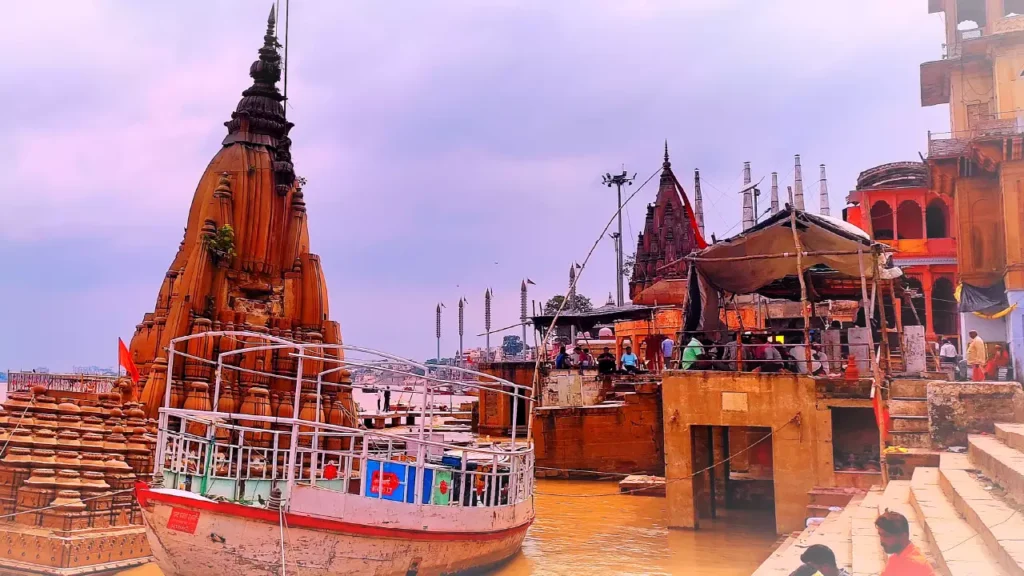It is so obvious when you hear about leaning structures that your mind immediately travels to Italy and the Leaning Tower of Pisa. If you are ignorant of Varanasi’s leaning temple, which tilts more than the leaning tower, this is fully warranted. Explore some fascinating information and folklore about the Kashi Karvat or Ratneshwar temple by reading on.
Varanasi, the centre of India’s religious culture, is a truly divine location. The tens of thousands of temples in Varanasi are a feast for the eyes and the soul, but Ratneshwar Mahadev’s leaning temple merits special note. Like the crystal-clear water surrounding it, the temple has many unusual characteristics and mysteries. You did hear correctly. The majority of the year is spent in floodwaters due to their glaringly low level.
This ancient temple is devoted to Lord Shiva, also known as Matr-rin Mahadev (a Shiva variant). A Nagara Shikhara (high curve shape) and a Garbhagriha (sanctum) are two features of the exquisite architecture. And don’t be shocked when I mention that the Garbhagriha is submerged in water for most of the time, with the water level occasionally even reaching the Shikhara. James Prinsep, an English researcher, asserted that a priest would plunge into the water to conduct devotion and other ceremonies when the temple entrance was submerged in water.
In Kashi, the Ratneshwar Temple is tucked away next to the Manikarnika Ghat. This is also referred to as the Kashi Karvat (lean in Kashi) because of its location and leanness. According to sources, the temple leans at a substantial 9 degrees, compared to the Leaning Tower of Pisa’s 4 degrees. On the other hand, the temple had not always been this way; it had once been upright.
Looking at historical photographs of the temple, we can tell that it was built before the 1860s, but for some reason, the ghat fell and tipped the temple backward. Its actual construction date is unknown, and its erection is still up for debate. According to Dr. Ratnesh Varma of the District Cultural Committee, the Amethi royal family built the building. There are, however, other fascinating myths about the tilt.
A Raja Man Singh servant is said to have erected the Ratneshwar Temple. He made the choice to build this shrine as a sign of his devotion to and duty to his mother, Ratna Bai. The temple was finished after several years of toil and labour, and the man proclaimed with pride that he had settled his mother’s debt. Do you, however, think a mother’s debt can ever be repaid? The temple bowed backwards as soon as he said those words, symbolising how a child is perpetually obliged to his mother.













